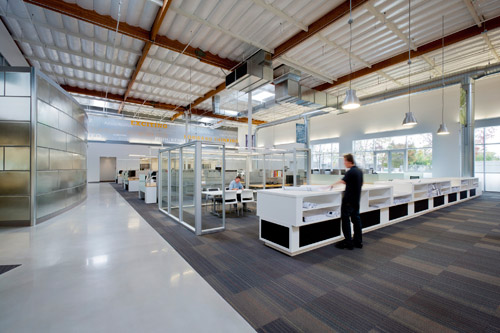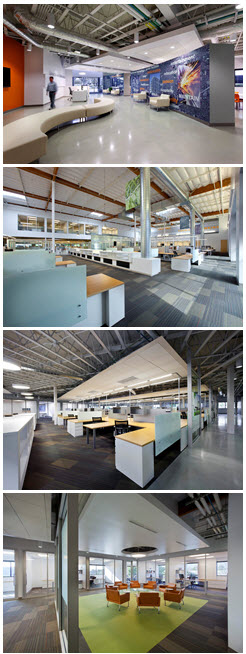Sustainable Design Principle #10: Step Up
Sustainably designed buildings really do have the ability to affect the bottom line. Today’s tenth and final Absolute Design principle is clear and to the point, Step Up. When we developed these creeds, as a company, a few years ago it was a very different world. The business climate was different, the economy was different, and our clients’ outlook toward green facilities was different. The green building movement has since matured and the thing that hasn’t changed, is the importance of simply get started.
 LPA’s 10 Principles of Absolute Design
LPA’s 10 Principles of Absolute Design
- Inter + Act
- Do Less
- Challenge Convention
- Zoom Out
- Zoom In
- Build Smart
- Enrich Lives
- Create Value
- Prove It
- Step Up
LPA Sustainable Design Principle #10: Step Up. The idea of being more sustainable has been discussed a great deal and by now we are all aware of the benefits. Step up is really a call to action. The time for green buildings – and generally, more sustainable decision making on a daily basis – is now. Your start can be as simple as taking the first step to reduce your energy or water use, or be more diligent about recycling. We tell everyone that the trick is to begin. You will be amazed at where it leads you. Just get yourself, your school, or your company to use less than you were using before. A few simple ways to do this include:
 Re-lamp existing light fixtures
Re-lamp existing light fixtures- Set printers to automatically print double-sided
- Start a recycling program
- Turn task lights off, at the end of the day
- Unplug micro-electronics
- Use coffee mugs instead of plastic or Styrofoam cups – we use cups and utensils manufactured from corn, and plates manufactured from sugar cane
- Read digital magazines
- Use recycled cardboard instead of plastic (PVC) binders
- Let daylight in, open the blinds
- Set monitors to power down, automatically at a certain time
There’s a lot of low hanging fruit that can be gleaned when conservation is your starting point. Everyone wants to be a part of something bigger than themselves and living and working lighter on the environment is an easy way to build consensus, give people a mission, and contribute to a more positive legacy for those to come.
Why aren’t people Stepping Up? The most common excuses are:
- It costs more. (Not true.)
- It’s too complicated to do. (Not true.)
- I’d have to pass a board resolution or get a committee together to get started. (Not necessarily. Start with one project and build on that success.)
Not only are people running out of excuses to not Step Up, they’re running into more and more demands to Step Up. When your grandchildren ask what you did to be a part of the solution, what will you say?
Our client, Southland Industries in Garden Grove, Calif. is a success story in “stepping up.” Together we took an old, vacant manufacturing building and gave it new life through sustainable thinking. Their 1970s-era existing warehouse is transformed into an interactive, work space of the future that is energy efficient, open, thoughtful, and collaborative. It’s a terrific example of how these types of buildings – and there are thousands in California – can be repurposed and made more efficient through integrated project delivery and of course, sustainable design.
Dan Heinfeld, FAIA, LEED AP BD+C and President of LPA Inc., leads the design direction of the firm and has done so for more than 30 years. As a pioneer in the sustainable building movement Heinfeld is passionate about sustainability and its importance in the process of informed design. More than 500 major design awards attest to LPA's commitment to design excellence. LPA provides services in architecture, sustainability, planning, interior design, landscape architecture, engineering, and graphics. HGXK5XDU89A5